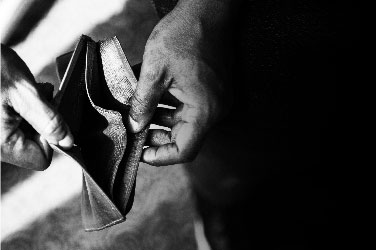Being in debt can hold you back from achieving your financial dreams, such as saving for retirement or owning a home. It can cause stress and anxiety, making you constantly worry about money and feel restricted in your life.
But here’s the good news: You don’t have to stay in debt forever. It’s important to prioritize getting out of debt. Follow these seven steps to regain control of your finances and become debt-free for good.
1. Fully Understand Your Debts
To break free from debt and avoid falling back into it, you need to address the habits or situations that caused the debt in the first place.
Go through all your loan statements and bills to know exactly how much debt you owe each month and the interest rates on each debt.
Make sure that your monthly debt payments and essential expenses are lower than your income. If you can’t cover your necessary bills, you may need to negotiate with lenders or find ways to increase your income.
2. Manage Your Spending
- Assess Your Current Spending:
The first step to managing your spending is understanding where your money is going. Take a close look at your bank statements, credit card bills, and receipts to identify your essential expenses (e.g., rent or mortgage, utilities, groceries) and discretionary spending (e.g., dining out, entertainment, subscriptions).
- Differentiate Between Needs and Wants:
Differentiating between needs and wants is crucial for prioritizing your spending. Needs are essential for survival and well-being, such as food, shelter, and healthcare. Wants, on the other hand, are non-essential items or activities that bring pleasure or convenience but are not necessary for survival.
Examples of necessities:
- Rent or mortgage payments
- Utilities (electricity, water, gas)
- Groceries and essential household items
- Transportation costs (e.g., commuting to work)
Examples of unnecessary expenses:
- Dining out at restaurants
- Entertainment expenses (movies, concerts, amusement parks)
- Subscriptions to streaming services or magazines
- Impulse purchases or luxury items
3. Create A Repayment Plan
Rather than simply applying extra funds to any of your debts, consider which debt you want to focus on paying off first.
You can choose to prioritize your debts based on factors like interest rate, balance, or other criteria that matter to you. Additionally, you can explore other strategies to manage your debt, such as reducing monthly payments or consolidating your debt.
Repayment Strategies
i. Snowball Method: With the snowball method, you tackle your debts starting from the smallest and working your way up to the largest.
Note: The term “snowball method” was popularized by Dave Ramsey. It’s named for its strategy of starting small and gradually growing, much like a snowball rolling down a hill.
Here’s how it works: Begin by making the minimum payment on each debt. Then, use any extra funds you have to pay off the debt with the smallest balance. This allows you to eliminate that debt quickly and see immediate progress in your repayment journey.
Once the smallest debt is cleared, move on to the next one with the smallest balance, while still making the minimum payments on your other debts. As you pay off each debt, you’ll have more money available to put toward the next one, thanks to having fewer minimum payments to cover.
Keep repeating this process until you’ve paid off all your debts.
ii. Debt Stacking: This approach emphasizes tackling debts based on their interest rates.
The higher the interest rate, the more costly a debt becomes over time. Paying off the debt with the highest interest rate first enables you to save the most money in the long term.
Note: Debt stacking is also known as the avalanche method, which stands in contrast to the snowball method.
Here’s how it works: Begin by making the minimum payment on each debt. Then, allocate any additional funds toward the debt with the highest interest rate. Once this debt is cleared, move on to the next one with the next highest interest rate while maintaining minimum payments on the others. Similar to the snowball method, paying off each debt frees up more money to put toward the next one, as you have one fewer minimum payment to cover each month.
iii. Student Loan Modifications If you’re burdened with student loans, you might qualify to have your repayment amount adjusted according to your income or financial circumstances, especially if your loans are from the federal government. This adjustment can reduce your monthly payments, giving you more breathing room to tackle other debts or strengthen your financial position.
Once you’ve cleared your other debts, you can begin making larger payments toward your student loans.
iv. Debt Consolidation If you’re finding it challenging to juggle multiple debts, you have the option to consolidate them into one single debt, even if your credit is less than perfect. This involves taking out a personal loan to pay off all your existing debts, streamlining your payments into one manageable monthly installment.
No matter which debt repayment strategy you pick, it’s important to stick to your plan and make payments on time each month to avoid extra fees and interest charges. Getting rid of your debt entirely may take months or even years, depending on how much you owe and the payments you can afford. Consistently making payments is key to becoming debt-free.
4. Understand Your Credit History
Take a look at your credit score and go through your credit report to spot any errors. You can obtain reports from the three major credit bureaus—Experian, Equifax, and TransUnion—or visit AnnualCreditReport.com. Remember, you’re entitled to a free credit report at least once a year.
Reviewing your credit report can give you insight into how your debt influences your credit score. You’ll see if you’ve missed payments frequently or have a high credit utilization ratio, indicating you’re using a big portion of the credit available to you.
5. Establish an Emergency Fund
While you’re actively paying down your debt, it’s crucial to simultaneously start setting aside money in an emergency fund. Having an emergency fund provides you with the flexibility to cover unexpected expenses, reducing the risk of falling back into debt in the future.
Even a modest amount, such as a few hundred dollars, can prove invaluable for unforeseen car repairs or medical bills. This decreases the likelihood of resorting to payday loans or accumulating additional credit card debt when faced with unexpected costs.
Note: Consider using a high-interest savings account or a money market account to ensure your emergency funds earn interest while remaining easily accessible whenever needed.
6. Avoid Accumulating More Debt
Adding to your debt load while trying to pay it off will hinder your progress and lead to accumulating more interest that you’ll struggle to manage. During your debt payoff journey, refrain from using credit cards, opening new credit accounts, or taking out additional loans.
You may choose to close your credit card accounts if you’re concerned about temptation. Alternatively, you can keep a credit card for emergencies only and avoid using it for everyday expenses.
Note: If you want to prevent yourself from using credit cards without closing the accounts, you can freeze them. Place your credit cards in a bowl or plastic bag filled with water and then place them in the freezer. Thawing them out will require considerable effort, giving you time to reconsider using credit before adding to your debt burden.
You can estimate the time it will take to become debt-free by using a debt repayment calculator. Some calculators allow you to input a specific monthly payment or a target debt-free date to tailor your repayment plan.
Keep in mind that your debt-free timeline may vary based on the amount you’re allocating toward debt repayment and whether you accrue additional debt. Revisit the debt repayment calculator periodically to track your progress toward achieving your debt-free goal.
7. Overcome Setbacks
Your journey to becoming debt-free might encounter obstacles along the way.
A financial crisis could necessitate temporarily scaling back your increased payments. You might find yourself relying on credit cards or taking out a personal loan to address an unexpected situation.
During such times, reassess your budget and resume your payments as soon as possible. Don’t let setbacks discourage you; stay committed to your debt repayment plan.
Setting debt milestones can help you stay focused and motivated throughout your debt payoff journey. Celebrating small victories, like paying off your first loan or chipping away 10% of your total debt, can boost your morale and keep you motivated toward achieving complete debt freedom.



